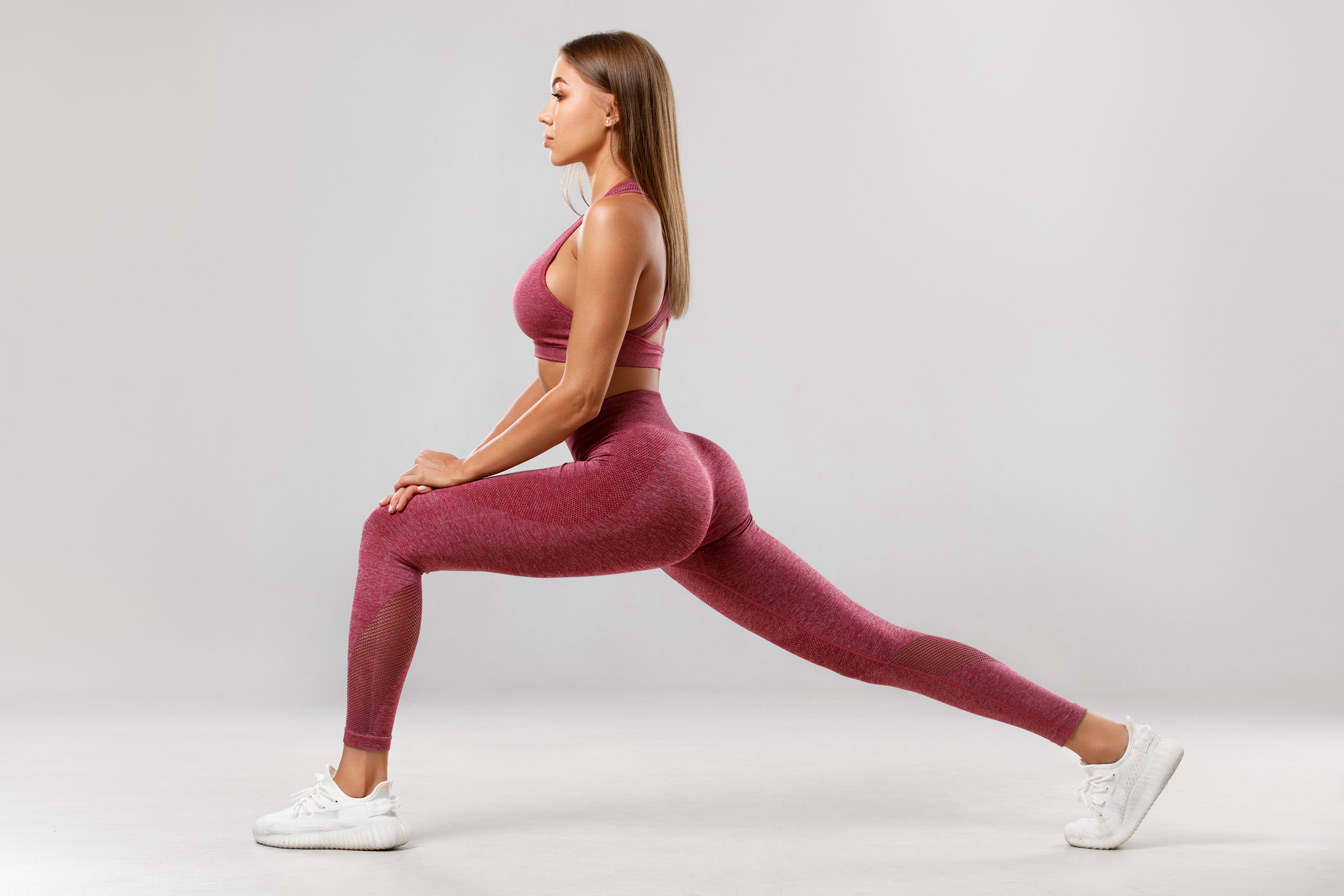
Stretching — both dynamic and static stretches — is one of the most important things you can do to prevent injury. Stretching helps to lengthen and loosen your muscles, which can help you stay injury-free while you’re working out. We’ve outlined basic stretching exercises that everyone should do before and after a workout.
Hamstring Stretch
This stretch targets the hamstrings. These are muscles located at the back of your thigh and are responsible for bending your knee. To do this stretch:
- Sit on the ground
- Stretch your legs in front of you.
- Reach forward and grab your left ankle, keeping your back, neck, and knee straight, then pull it until you feel a stretch in the back of your thigh.
- Hold for 30-60 seconds, then switch legs and repeat.
By this, your hamstrings will be flexible and prevent them from becoming tight, leading to injury.
Quadriceps Stretch
This stretch targets the muscles located in the front of your thigh. These muscles are called the Quadriceps Femoris. They are responsible for straightening your knee while squatting. To do this stretch:
- Stand with your right feet hip-width apart.
- Reach back and grab your left ankle.
- Bring your heel towards your buttock, keeping your back straight.
- Hold for 10-30 seconds before switching legs and repeating.
This stretch helps your knee to move full range freely, preventing injuries.
Calf Stretch
This stretch targets your calves, located in the back of your lower leg. They are responsible for ankle flexibility and pointing your toes. To do this stretch:
- Hold on to a wall
- Keep one foot back with your knees straight and heel on the ground.
- Place your other foot in front and slowly bend the knee.
- Lean forward until you feel a stretch in the back of your Calf.
- Hold on to this position for 30 seconds. Switch legs and repeat.
This stretch helps to prevent injuries such as Achilles Tendonitis.
Pectoral Stretch
This stretch targets the chest muscles in front of your upper body. To do this stretch exercise:
- Stand with your feet hip-width apart.
- Extend your arms out to your sides at shoulder height.
- Keeping your shoulders down, lean towards your left side until you feel a stretch in your chest.
- Hold on for 30 seconds, then do the same to the other sides and repeat.
This stretch helps to lengthen chest muscles and prevent them from becoming tight, which can lead to injury, and also, for healthier positioning, it feels natural and comfortable.
Latissimus Dorsi Stretch
This stretch targets the muscles located in the back of your upper body. These muscles are called Latissimus Dorsi. They help our arms to rotate and extend backward. To do this stretch exercise:
- Stand with your feet hip-width apart.
- Extend your arms out to your sides at shoulder height.
- Keeping your shoulders down, lean towards your right side until you feel a stretch in your back.
- Hold for 20-30 seconds, then do the same to the other side.
This exercise helps to stabilize your spine and prevents back injuries while providing shoulder and back strength.
Triceps Stretch
This stretch targets muscles located in the back of your upper arm. These muscles are called the Triceps Muscles, which help straighten your elbow. To do this stretch:
- Stand with feet hip-width apart
- Support yourself by placing your left hand on the wall.
- Bend your right arm behind you and use your other hand to reach back and grab onto the elbow of your bent arm.
- Gently pull until you feel a stretch in the back of your arm.
- Hold on for 30 seconds, then switch arms and repeat.
This stretch helps to prevent tight muscles in the elbow area.
Butterfly Stretch
This stretch is also known as the Hip Opener, and it targets muscles located in the front of your hips. They are called Flexors Muscles. This muscle helps in rotating your hip. To do this stretch:
- Sit on the floor with the soles of your feet together.
- Pull them close to your groin.
- Allow your knees to fall open as you press down on your thighs with your hands.
- Hold for 30 seconds, then repeat.
This stretch helps relieve tension in the hips and prevents injuries after a heavy exercise.
Neck Stretch
This stretch targets muscles located in the front and back of your neck. To do this stretch:
- Sit or stand with head level and straighten your spine.
- Tilt your head to the right and use your left hand to gently pull your head towards your shoulder.
- Hold for 30 seconds before tilting your head to the left and repeat using your right hand.
This stretch helps to prevent neck pain and tension headaches while sporting.
Hip Adductor Stretch
This stretch targets muscles in the inner thigh. This muscle helps in moving your leg away from the body’s midline. To do this stretch exercise:
- Stand with your feet shoulder-width apart and extend your right arm out to the side.
- Step forward with your left leg and lean towards your right side until you feel a stretch in the inner thigh.
- Hold on for 30 seconds, then switch sides and repeat.
This stretch treats pain in the hips and knees.
Glute Stretch
This stretch targets muscles in the buttocks. Your glutes help in extending your hip. To do this stretch:
- Sit on the floor with your legs stretched in front of you.
- Place your left ankle over your right thigh and press down on your left knee with your hand to deepen the stretch.
- Hold for 30 seconds, then switch legs and repeat.
All these stretch exercises are a great way to prevent injuries from happening. When incorporated into a routine, they can help improve flexibility and range of motion. So, next time you’re feeling tight or sore, try one of these stretches. Remember to always consult with a physician before starting any new exercise routine. These stretches don’t replace medical advice or treatment. If you experience any pain or discomfort while doing these exercises, please stop and consult a medical professional.
